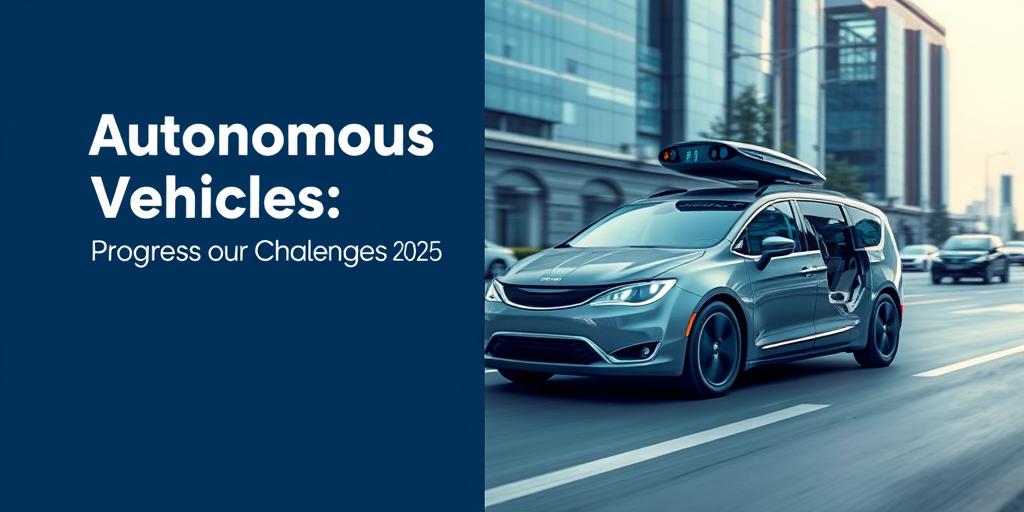Autonomous Vehicles: Progress and Challenges by 2025
Autonomous vehicles (AVs), also known as self-driving cars, represent a transformative technology poised to revolutionize transportation. By 2025, significant advancements are expected, but substantial challenges remain. This article provides an overview of the progress made in autonomous vehicle technology and the hurdles that need to be overcome for widespread adoption.
Current State of Autonomous Vehicle Technology
As of 2024, autonomous vehicle technology has made considerable strides. Companies like Tesla, Waymo, and Ford have invested billions in research and development, resulting in vehicles capable of navigating complex environments with limited human intervention. The technology relies on a combination of sensors, including:
- Lidar: Light Detection and Ranging, which uses laser beams to create a 3D map of the surroundings.
- Radar: Radio Detection and Ranging, which uses radio waves to detect the distance and speed of objects.
- Cameras: Provide visual data for object recognition and lane detection.
- Ultrasonic Sensors: Used for short-range detection, such as parking assistance.
These sensors feed data into sophisticated algorithms that allow the vehicle to make decisions in real-time. Machine learning, particularly deep learning, has played a crucial role in improving the accuracy and reliability of these algorithms.
Expected Progress by 2025
By 2025, several key advancements are anticipated in the realm of autonomous vehicles:
- Enhanced Sensor Technology: Next-generation sensors will offer higher resolution, greater range, and improved performance in adverse weather conditions. Solid-state lidar, which is more compact and cost-effective, is expected to become more prevalent.
- Improved AI and Machine Learning: AI algorithms will continue to evolve, allowing AVs to better understand and predict the behavior of other drivers, pedestrians, and cyclists. This will lead to safer and more efficient navigation in complex urban environments.
- Expanded Geofenced Areas: The areas in which AVs can operate safely and reliably will expand. While fully autonomous driving (Level 5) may not be ubiquitous, Level 4 autonomy (high automation in specific conditions) will become more common in designated zones.
- Regulatory Frameworks: Governments worldwide will continue to develop and refine regulations for autonomous vehicles. Clear guidelines for testing, deployment, and liability will be essential for fostering public trust and accelerating adoption.
- Infrastructure Development: Smart infrastructure, such as connected traffic lights and road sensors, will enhance the capabilities of AVs. Vehicle-to-infrastructure (V2I) communication will enable vehicles to receive real-time information about traffic conditions, road hazards, and other relevant data.
Challenges and Obstacles
Despite the progress, significant challenges remain:
- Safety Concerns: Ensuring the safety of autonomous vehicles is paramount. AVs must be able to handle unexpected events, such as sudden changes in weather or erratic behavior by other drivers. Rigorous testing and validation are essential.
- Ethical Dilemmas: Autonomous vehicles will inevitably face ethical dilemmas, such as deciding who to protect in the event of an unavoidable collision. Developing ethical frameworks for AV decision-making is a complex but necessary task.
- Cybersecurity Risks: AVs are vulnerable to cyberattacks, which could compromise their safety and security. Robust cybersecurity measures are needed to protect against hacking and data breaches.
- Public Acceptance: Overcoming public skepticism and building trust in autonomous vehicle technology is crucial for widespread adoption. Transparency, education, and demonstration projects can help alleviate concerns.
- Infrastructure Limitations: Many existing roads and infrastructure are not designed for autonomous vehicles. Upgrading infrastructure to support AV technology will require significant investment.
Conclusion
Autonomous vehicles have the potential to transform transportation, offering benefits such as increased safety, reduced congestion, and improved accessibility. By 2025, advancements in sensor technology, AI, and regulatory frameworks are expected to drive further progress. However, challenges related to safety, ethics, cybersecurity, public acceptance, and infrastructure limitations must be addressed to realize the full potential of autonomous vehicles. Continued collaboration between industry, government, and research institutions is essential for navigating these challenges and paving the way for a future of safe and efficient autonomous transportation.
